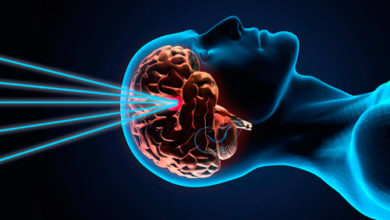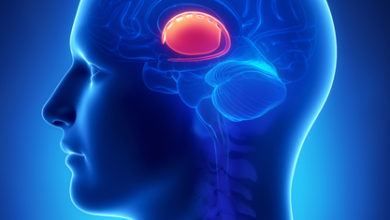Symptoms of pituitary adenoma
The content of the article
One type of brain tumor is a pituitary adenoma. The symptoms of this disease are not very difficult to determine, and if you consult a doctor in time, you can be cured at an early stage.
In general, this concept is usually considered to be a benign tumor of the anterior pituitary gland. This is a fairly small part of the brain whose main purpose is to control the endocrine glands through the process of producing hormones. It is important to note that from the point of view of hormonal levels, pituitary adenoma tends to be active and inactive. Clinical symptoms directly depend on this factor, as well as the characteristics of the size of the tumor and its growth. When a pituitary adenoma is diagnosed, the symptoms in men are no different from the symptoms of a pituitary adenoma in women.
The main manifestations of the disease include the occurrence of certain problems with vision, disruption of the normal functioning of the thyroid gland and other internal organs. Manifests itself in a violation of the normal growth and proportionality of some limbs. But sometimes it doesn’t show up at all. Diagnosis of this disease is based on information provided as a result of magnetic resonance imaging, examination by an ophthalmologist, and tests for the presence of certain hormones in a person’s blood.
Features of the pituitary gland
Although the pituitary gland is small in size, it is an extremely important part of the entire nervous system of the human body. It is located at the base of the brain, in a special formation of bones, which are referred to in the scientific literature as the “sella turcica”. Despite its small size, the pituitary gland continuously produces hormones that are very important for life and are responsible for the entire endocrine system. In this regard, when a disease such as pituitary adenoma or various similar diseases of a pathological nature appears, the entire normal functioning of the human body is significantly disrupted. The symptoms that appear may be disguised as some other disease.
As a rule, a pituitary adenoma appears in every tenth person who has a brain tumor. It most often manifests itself in people whose age has crossed the mark of 30–40 years. But sometimes pituitary adenoma occurs in children. The incidence of the disease is not affected by gender, so it occurs equally in both men and women. An important factor is that the tumor is benign, and therefore poses less danger than its malignant relatives. The growth of the tumor is quite slow.
This type of tumor is usually divided into several different groups, arranged according to a certain characteristic.
In terms of size, adenomas are:
- micro-sized - in the case when the size of the tumor is 2 centimeters or less;
- macro-sized - when the size of the tumor exceeds 2 centimeters.
From the point of view of the ability to provide hormone synthesis, adenomas are usually divided into active hormonal and non-hormonal tumors. The former produce a very large amount of excess and excessive hormones, the latter, on the contrary, do not produce them at all. Moreover, in the presence of such a hormonally active disease as pituitary adenoma, the consequences in men can be quite serious, because the normal production of hormones is disrupted.
The former, in turn, can be classified according to the type of hormone they produce. According to modern research there are:
- somatotropinomas (excessive production of growth hormone);
- prolactinomas (lots of prolactin);
- corticotropinomas (excessive production of adrenocorticotropic hormone);
- thyrotropinomas (excessive production of thyroid-stimulating hormone);
- gonadotropinomas (excessive production of hormones that are responsible for the normal functioning of the sex glands).
As a result, the hormone, which is present in excess, produces unique symptoms.
If we consider the situation from the point of view of the sella turcica and adjacent formations, a pituitary adenoma can be:
- located directly within the sella turcica, usually a microadenoma ;
- going beyond its boundaries;
- growing into the sinus and destroying the wall of the sella turcica.
For what reason does a pituitary adenoma appear?
Modern medicine cannot give an exact answer to the question of why pituitary adenoma occurs. At present, we can only say that adenoma is not a disease that is transmitted hereditarily. It is generally believed that the following factors may influence the appearance in one way or another:
- mechanical head injuries;
- severe infectious diseases that during their course affect the nervous system, for example, meningitis or abscess;
- the presence of a significant number of bad habits that have a negative impact on a woman’s body during pregnancy;
Some experts believe that pituitary adenoma is a consequence of the use of oral contraceptives, but this has not been proven.
Main signs of pituitary adenoma
When a person is diagnosed with a pituitary adenoma, clinical signs can be divided into two fairly large groups:
- ophthalmic-neurological - such signs that are very closely related to the increase in tumor within the human skull. Their appearance, one way or another, is associated with strong compression from the tumor of neighboring formations, primarily the optic nerves.
- endocrine - these are signs that are directly related to the production of excessive amounts of certain hormones; this group also includes certain phenomena of insufficiency of certain types of hormones, which appears due to the destruction by the tumor of such cells in the pituitary gland that were responsible for their production. Based on this, it is obvious that these may be symptoms showing either an increased or, on the contrary, a decreased level of hormones in the patient’s body.
In principle, all symptoms represent a triad for pituitary adenoma.
Symptoms of an ophthalmo-neurological nature
This group of symptoms is expressed more strongly the larger the size of the tumor. For example, a small microadenoma does not show itself at all. This is due to the fact that it does not leave the boundaries of the sella turcica and, accordingly, does not participate in any way in squeezing neighboring departments and structures. In turn, macroadenomas virtually always have signs of this type.
These signs usually include:
- Severe, dull headache And it does not depend at all on the position of the patient’s body, as well as the time of day. As a rule, it has a local location in the frontal or temporal lobe, is not accompanied by uncontrollable nausea, and is not relieved by painkillers. This is due to the serious pressure of the tumor, which is constantly growing. In cases where the headache is excessively severe, hemorrhage may occur in the pituitary adenoma.
- Field of view problem. In most situations, it is explained by the process of loss of the so-called side halves. This sign is formed due to compression from the constantly enlarging adenoma of the optic nerves, which pass directly under the pituitary gland. Depending on the force of compression, vision loss is characterized by different types at the site of the chiasm formation. Small black spots may appear or up to half of all vision may disappear. An example that patients often give when trying to explain how they feel is looking into a pipe. Complete atrophy of the nerves is also possible, which leads to deterioration of vision; lenses will not help in this situation.
- Disorders of motor functions of the eye. This type of sign is directly related to the process of compression of the eye muscles by the tumor. First of all, this is usually attributed to the occurrence of a bifurcation effect. It may well occur periodically or in the event of certain actions, for example, looking to the side or a banal squint. This type of symptoms manifests itself when the pituitary adenoma begins to grow laterally.
- Constant feeling of complete congestion in the nose and sinuses. This symptom is quite common in macroadenomas. Associated primarily with the process of spreading to the sinuses of the sphenoid or ethmoid type.
- Increased possibility of fainting. It appears when the macroadenoma grows upward, resulting in compression of the hypothalamus.
Endocrine signs
Signs of an endocrine nature include:
- symptoms that are directly related to an excessive amount or, on the contrary, a lack of hormones. The adenoma should be quite large. Such symptoms are expressed by reducing the functionality of the thyroid gland, serious weakness of the body occurs, significant dryness of the skin, weight gain due to constant swelling, etc. On the mental side, the situation also worsens.
- deterioration of the normal functioning of the adrenal glands, which entails a drop in blood pressure, severe fatigue, and loss of appetite.
- decrease in sexual capabilities. Such factors include decreased desire, impotence, problems with the cycle in women, etc.
Tumors that are active at the hormonal level manifest themselves in unique ways depending on the type of hormone produced. The most common ones should be considered in more detail:
- Somatotropinomas are most pronounced in children, due to the fact that they contribute to the manifestations of the so-called excessive growth of the patient’s body as a whole or part of it. Referred to as gigantism and acromegaly. Improper growth of some parts of the body is accompanied by severe pain and problems with sensitivity in these places. Both children and adults are susceptible to obesity, increased sweating, excessive hair growth, and diabetes. And also problems arise associated with the growth of the size of the human thyroid gland, and it functions normally;
- corticotropinomas most often lead to a serious increase in the hormone of the same name in the patient’s blood. This leads to the formation of the so-called Itsenko-Cushing syndrome. The main features of this disease include an increase in blood pressure, obesity, primarily an increase in the percentage of fat on the face, excessive growth of hair, pigmentation of the skin, muscle weakness, stretch marks that appear on the abdomen and have an unusual color, a sharp deterioration of the entire immune system in general. . Corticotropinomas have the ability to transform into malignant ones and give metastases;
- Prolactinomas can severely disrupt women’s cycles, up to the complete cessation of menstruation. And also the consequence of the disease is infertility and the formation of breast milk. Men also have problems in the sexual sphere, first of all, potency deteriorates, attraction to the opposite sex is greatly reduced, and the mammary glands grow greatly. Unique symptoms that are typical for both women and men include acne-type rash, so-called seborrhea, and excessive growth of body hair. Currently, according to data provided by medical organizations, this type of adenoma is the most common;
- thyrotropinomas lead to excessive production of hormones produced by the human thyroid gland. The following symptoms occur: increased level of sweating, sudden chills, increase in general body temperature, shine in the eyes, increase in blood pressure, problems with heart rhythm, sudden weight loss, increased volume of urination, problems in the emotional sphere;
- Gonadotropinomas can cause severe problems and disrupt the normal functioning of sex hormones. Characterized by problems in the sexual sphere; women may have problems with the cycle, but significantly less severe than in the previous case. It is important to note that it is usually quite difficult to identify this type of adenoma; it can be found exclusively by chance, as a rule, with changes of an ophthalmic-neurological nature.
The last two varieties are quite rare in modern practice.
Effective diagnosis of adenoma
Despite the fact that there are many different clinical manifestations, the diagnostic process is very difficult even in modern realities. This is explained by the variety of complaints that arise. The wide range of symptoms forces a person to turn to rather specialized specialists. These doctors cannot always correctly recognize the manifestation of cancer. Based on this, it is obvious that in the case of many symptoms of different types, it is necessary to conduct an examination by different doctors.
Effective diagnosis is facilitated by a blood test for the presence of hormones. Deviations from the norm in this case can prompt the doctor to the right thoughts and allow him to identify the disease.
In the past, X-ray testing of the sella itself was most often used. Using this method, it was possible to identify osteoporosis, double-circuiting and other signs that are obvious symptoms of this disease. However, it is worth noting that all this refers to signs of a late nature, which appear already when the disease is well developed.
In turn, magnetic resonance imaging allows for more effective diagnosis of diseases. This method is the most modern and accurate; practically no adenoma can hide from this type of examination. The only problems may arise when identifying the smallest microadenomas. Especially if they are not hormonally active. There are practically no symptoms.
Disease treatment process
The question arises of how to treat pituitary adenoma. As a rule, all methods and methods of effective treatment are usually divided into two large categories: conservative and surgical. The former usually include therapy with various medications (conservative), chemotherapy and radiation therapy.
Conservative treatment is used for benign brain oncology. The size of this neoplasm is traditionally small. It is carried out using special medications with a special principle of action. It can be carried out by directly affecting the tumor using radiation methods. Moreover, it can be used as traditional radiation therapy , when one point in the tumor is exposed for a long time, or with modern radiation methods. In this case, it is produced in a more advanced way simultaneously from several points over a long period of time. The method of radiosurgery or stereotactic surgery can be used, in which a radioactive substance is introduced directly into the tumor. Endosuprasellar pituitary adenoma requires special treatment.
Surgery for such diseases varies depending on the direction in which the tumor grows and may have different names. The most modern methods of performing the operation are:
- process of endoscopic transnasal tumor extraction. It is performed through the nasal canals, as a result there is no need to perform a dangerous craniotomy operation to get to the tumor;
- different types and options of transcranial interventions in case of a pronounced process of tumor enlargement in size
In addition, it is worth noting that combinations of various surgical methods are actually possible.
After surgery, various complications can occur. A lot of problems can arise in the case of traditional surgery. However, using modern endoscopic methods, the negative impact can be minimized.
Please rate the article:





